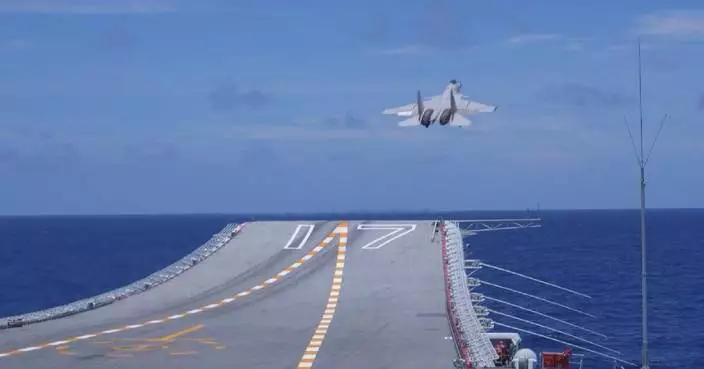The Shenzhou-19 crew aboard China's orbiting space station successfully installed protection devices against space debris during their first extravehicular activities (EVAs) on Tuesday.
The protection devices will effectively shield the space station from the impact of tens of thousands of pieces of space debris in Earth's orbit, which could collide with the station and cause leaks.
Astronauts Cai Xuzhe and Song Lingdong were assigned with the EVA duties, while Wang Haoze provided support inside the space station throughout the mission.
With assistance from the ground team and the space station's robotic arm, Cai and Song successfully completed the tasks.
Given the dispersed installation locations of the protection devices, the two astronauts carried out the task with one using the robotic arm while the other climbed outside the station to assist.
"During the EVAs, the Shenzhou-19 crew successfully installed the protection devices against debris on the Tianhe core module. Throughout the process, they coordinated with the ground team multiple times for confirmation. They proceeded with the installation according to the commands from the ground. After finishing the installation, the ground and space teams reconfirmed to ensure the devices were properly installed and would effectively protect the space station’s cables and pipelines. After the reconfirmation, they then collected the tools and moved away from the installation location," said Wu Hao, a staffer with the China Astronaut Research and Training Center.
The protection devices were designed with a universal interface compatible with the space station, making it easier for astronauts to carry, transfer, and install them during the EVAs, significantly improving work efficiency.
"We focused on reusability when designing the tools, ensuring they could be used multiple times during EVAs. This approach not only helps reduce costs but also improves work efficiency," said Meng Lingzi, a staffer of the China Aerospace Science and Technology Corporation.
In addition to installing the protection devices, the Shenzhou-19 crew also performed other tasks, such as inspecting extravehicular equipment and facilities. The entire process lasted nine hours.
The Shenzhou-19 crew is set to carry out a slew of scheduled space-science experiments and technical tests, and they will also undertake additional extravehicular activities and install payloads outside the space station, according to the China Manned Space Agency (CMSA).

Shenzhou-19 crew installs protection devices to shield space station from debris









